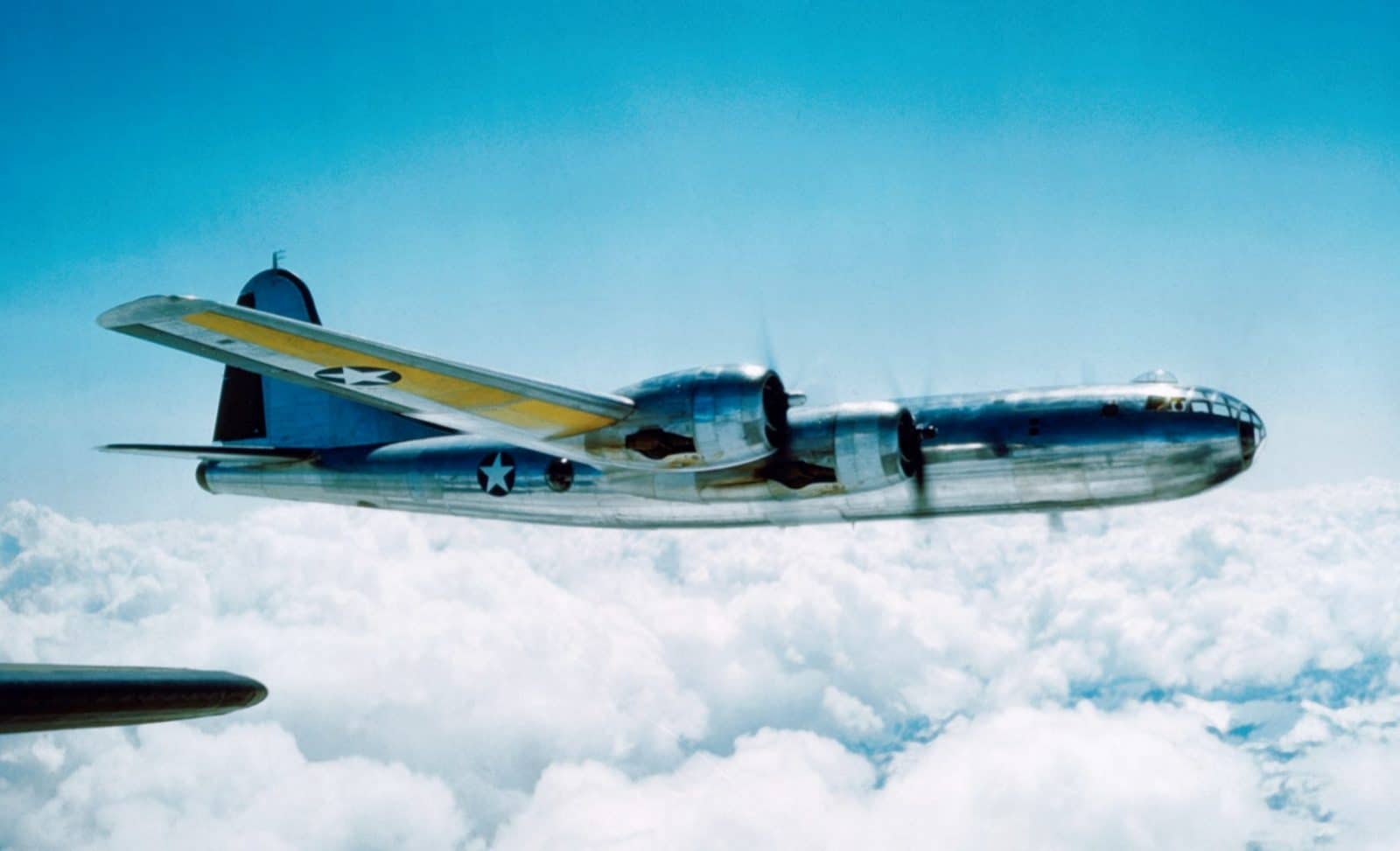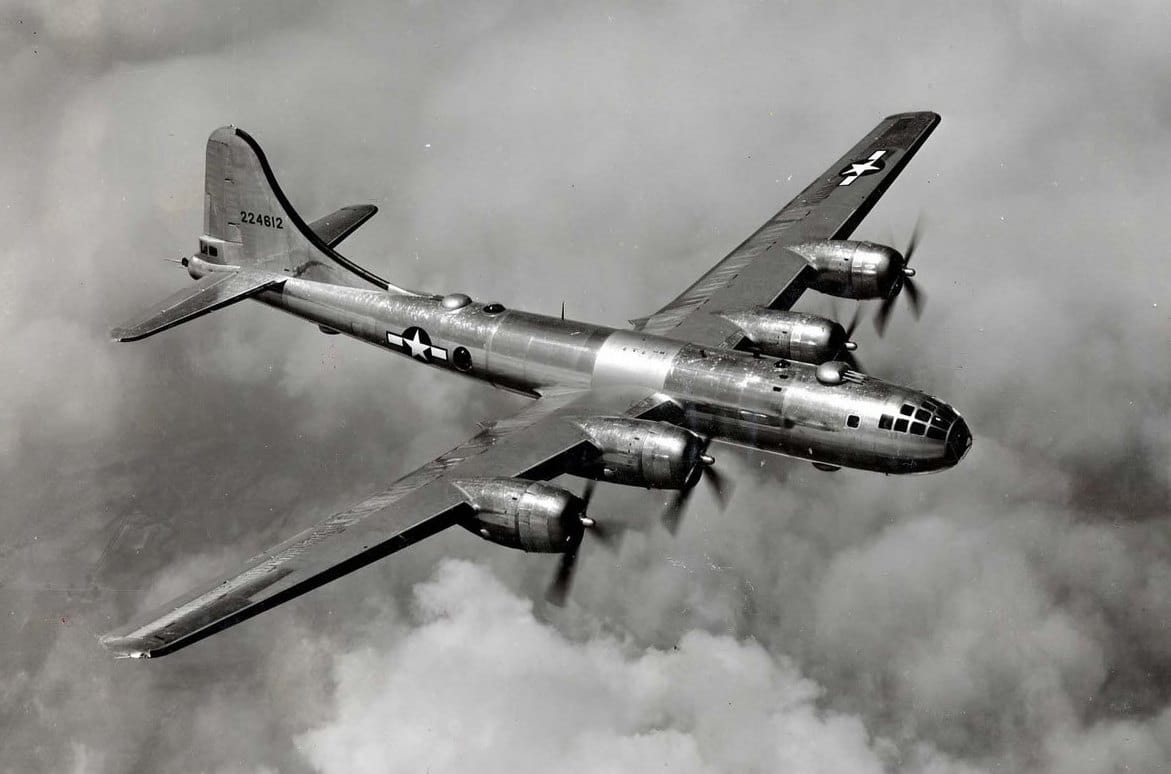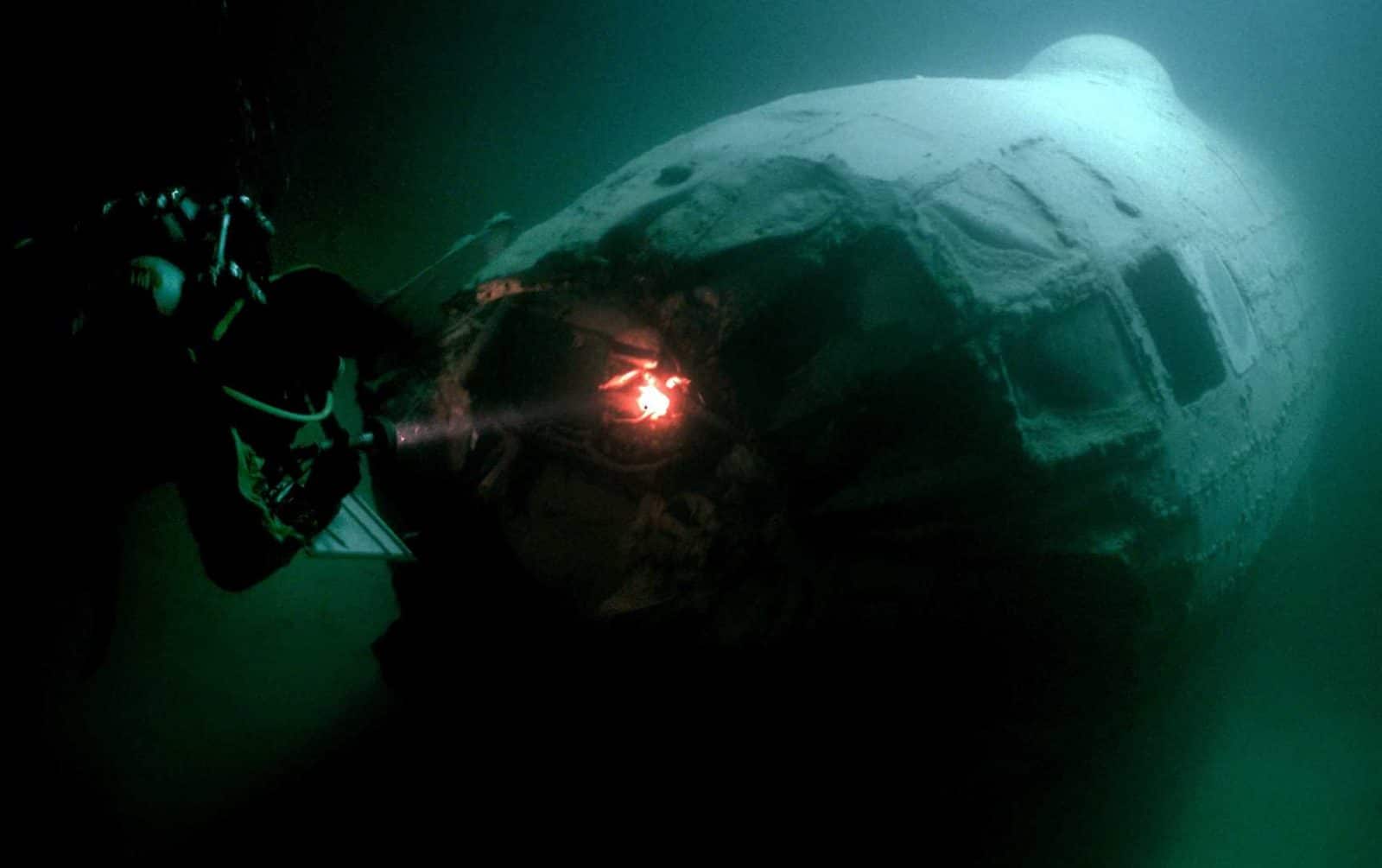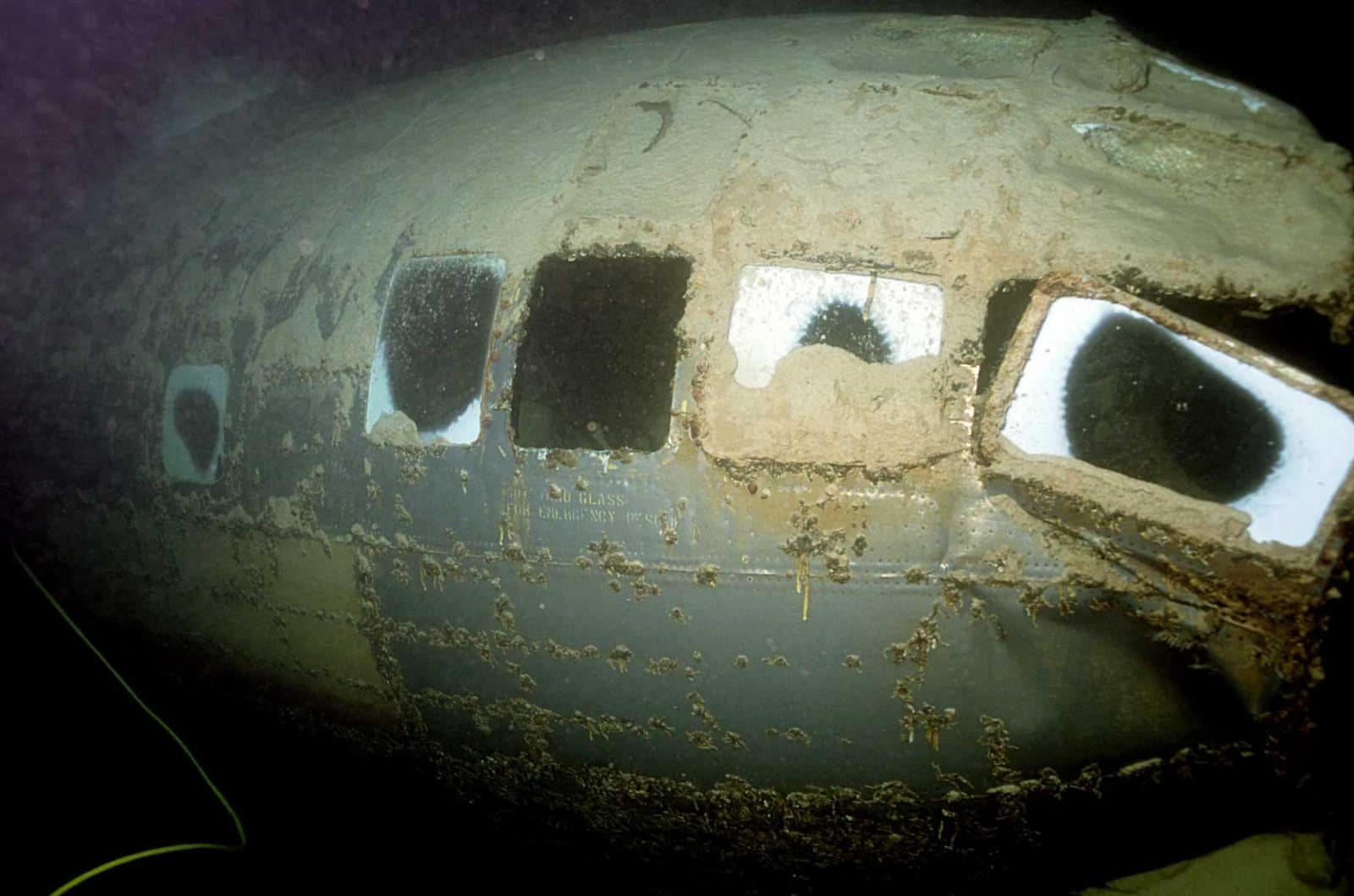The history of this RB-29 is amazing, but visitor access may be a challenge.
3,970 Boeing B-29 Superfortresses were built by Boeing at Renton in Washington and Wichita, by Bell at Marietta, and by Martin in Omaha. The effort to design, develop, and produce these advanced aircraft was a massive undertaking. B-29s were adapted for everything from weather research to flying television transmitters.
Many B-29 airframes were modified to create long-range, high-altitude photo reconnaissance aircraft. Designated first as F-13 and later as RB-29, these recon Superfort variants flew reconnaissance, research, and test missions all over the world during the 1940s and 1950s. This story is about one of them.

A Post-War Beginning
B-29-100-BW Superfortress Air Force serial number 45-21847 entered service with the United States Army Air Force (USAAF) on 13 September 1945. Not long thereafter, the bomber was modified to F-13 specifications at the Oklahoma City Air Depot at Tinker Army Air Field (AAF).
45-21847 served the remainder of 1945 based out of Chino AAF and then Victorville AAF. From there, 45-21847 went to Warner Robins Air Depot at Robins AAF in Georgia to be modified for cold weather operations and was redesignated B-29F during April of 1946.

Becoming the RB-29
By June 1946, the aircraft was assigned to Fairchild AAF in Washington. In April 1947, the aircraft was assigned to Muroc Flight Test Base (later Edwards Air Force Base [AFB]) in California. From there, the Superfort went to the Sacramento Air Depot at McClellan AAF in California to undergo modification to RB-29 standards. Once the mods were complete, which included the stripping of all her guns, 45-21847 was sent to the Naval Ordnance Test Station (NOTS) at Naval Air Weapons Station (NAWS) Inyokern (now China Lake).

Fateful Flight
At Inyokern, the RB-29 was fitted with an experimental sensor system called Sun Tracker. The device was intended for intercontinental ballistic missile (ICBM) guidance using navigation by the sun. The RB-29 was also used for upper air research in conjunction with rocket flights being fired from White Sands Missile Range in New Mexico.
The Sun Tracker mission profile required a climb to 35,000 feet or so, and then a steep dive down to low altitude–in this case, as low above the surface of Lake Mead on the Arizona/Nevada border as possible. On 21 July 1948, pilot Captain Robert M. Madison and his crew of four were flying a Sun Tracker mission when the aircraft went too low and hit the lake’s surface going 250 miles per hour. Then the RB-29 did its best imitation of a skipping stone until coming to rest and taking on water. Fast.

Secret Mission = Secret Results
The impact with the surface of the lake had torn three of the four Wright R-3350-23 Duplex-Cyclone turbo-supercharged radial engines from the Superfort’s wings, leaving only engine #1. When the aircraft finally came to a stop, the crew was able to take to life rafts before the RB-29 sank beneath the surface of Lake Mead. The crew was rescued from the lake after six hours in their rafts.
They were admonished about disclosing any details regarding the flight, their mission, or the aircraft’s loss. Thanks to the classification of the Sun Tracker program, details were not made available until 50 years after 45-21847 sank.

Lost…and Found
A private dive team using side-scan sonar found the RB-29 wreck in the Overton Arm of Lake Mead in 2001. The wreck’s location dictates that the National Park Service (NPS) has custody of it. The Lady, as the Superfort is now called, is listed on the National Register of Historic Places.
Dives on the RB-29 wreck have been an on-again-off-again affair since it was discovered, thanks in part to variations in lake water depths due to drought in the region. The NPS is (quite justifiably) concerned about conserving the wreck, so dive ops to the site have been limited. But what 45-21847 did and how she got there is a much better story than the back-and-forth about diving the wreck.

Bonus Video
Here’s a nice HD video produced by Lake Mead NRA Public Affairs about The Lady. It was uploaded to YouTube by Lake Mead. Enjoy.
[youtube id=”tXbwEpTfIkk” width=”800″ height=”454″ position=”left”]

I would think the Forest Service rather than preserving the wreck in place would be more concerned with removal of the wreck to eliminate further erosion of the air frame and related components and the increased pollution released into the lake ecosystem from that erosion and decomposition. Yes, removal of the B-29 and scattered pieces would cause a certain level of disturbance to the lake bottom but ultimately result in a more stable ecosystem, would it not? Done properly, recovery can be beneficial to surrounding areas. There has to be fuel in the tanks and oil in the engines that ultimately will be released into the water as the fuel tanks and oil reservoirs are breached through the corrosion of their metals. Yes, three of the engines are scattered around the crash site but can be located by today’s technology and recovered also.